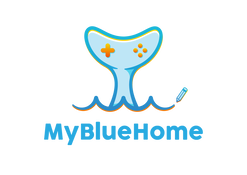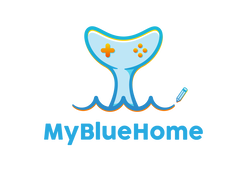The aim of environmental education and the study of the environment in general, is to acquire knowledge and develop skills, values and attitudes that enable the students to observe, describe, interpret and to some extent predict the functioning, interrelations and interactions of the natural and man-made environment in which human activity develops, in a way that raises awareness of the associated benefits and problems, and of the need for sustainable development. This process is intended to create a global view of life, which consists mainly of developing cognitive links and interactions between different subjects, with the emphasis on the student's role as a researcher.
This can be further refined in the case of the marine environment around fixed pedagogical frameworks related to the environmental sciences, presenting the descriptive concepts of learning objectives, the competences that the children will acquire, and the general guidelines and key features around which the Game Structure and Development, and the Ocean Museum will eventually be built.
This can be further refined in the case of the marine environment around fixed pedagogical frameworks related to the environmental sciences, presenting the descriptive concepts of learning objectives, the competences that the children will acquire, and the general guidelines and key features around which the Game Structure and Development, and the Ocean Museum will eventually be built.
LEARNING OBJECTIVES
The learning objectives are formulated here using two approaches. In the first one, a list of learning objectives is presented in a conceptual form, as introduced by the curricula of primary education in the 4 countries of the consortium; concepts are more freely described in this approach, having in mind the pedagogical impact that the project is trying to achieve:
- Recognize the diversity of plants and animals in the marine environment
- Distinguish factors that influence the growth of animals and plants in the sea
- Relate the characteristics of the marine environment to the presence of certain plants and animals
- Recognize the relationship between the well-being of the marine environment and the quality of human life
- Cycle of water and factors that disturb it – The big ocean as a water receptor and reservoir (surface and groundwater, lakes, rivers, seas, springs, aquifers, water table)
- Understand concepts around issues that arise from improper use of water (pollution, contamination, eutrophication, etc.)
- Learn about Waste Management
- Discover the role of water as a habitat – How to protect and restore ecosystems
- What is ocean acidification and how does it affect us and the ecosystem?
- Species at risk of extinction and causes of their extinction
- Consequences of human intervention to the extinction of species
- Recognize the necessity of fishery resources in the human culture, economic and nutritional benefits
- What is sustainable fishing?
- Classification of marine animals according to specific characteristics
- Familiarize with the procedures and criteria of scientific methodology
STRUCTURING LEARNING OBJECTIVES
In this second approach learning objectives formulation, the goal is to transform these learning objectives into specific environmental topics/issues, around which the Game Structure and Story can be formulated; in this approach a “cause and effect” relationship is established and a short description is provided in order to facilitate the creative process, as can be seen in the following table:
# |
Descriptive Concepts |
Caused by |
Effects/Results |
Possible Solutions |
1 |
Ocean Warming |
Greenhouse gases (e.g., CO2, CH4 etc.) from fossil fuel, biomass burning etc. |
Sea level rise, habitat degradation/destruction, species migration (e.g., fish, animals), species extinction (e.g., animals, coral reef, shellfish, benthic species) etc. |
Reduction of greenhouse gases (by reducing the use of fossil fuel, advancing renewable energy technology, inventing ways of containing greenhouse gas emissions etc.) |
2 |
Ocean acidification |
CO2 emissions |
habitat degradation/destruction, species extinction (e.g., animals, coral reef, shellfish) etc. |
Reduction of CO2 emissions(by reducing the use of fossil fuel, advancing renewable energy technology, inventing ways of containing greenhouse gas emissions etc.) |
3 |
Water pollution/contamination/eutrophication |
Waste from human activities that are released either directly in the sea or rivers, or indirectly in ground water |
Habitat destruction, migration of species, disruption of food chain (due to eutrophication), etc. |
Regulatory action on waste release from human activities (industry, farming), promotion of sustainable waste management and farming practices, etc. |
4 |
Overfishing |
Incomplete/absent regulations and control on fishing |
Species extinction, habitat destruction |
Regulatory action on fisheries, promotion of sustainable fishing practices, etc. |
STUDENTS’ ACQUIRED COMPETENCES
The project is expected to help students acquire some basic competences, for example:
- Social competences
- Teamwork/collaboration
- Critical thinking
- Creativity
- Decision making
- Art competences
- Digital/technical competences
- Proactive attitudes
- Good practices and habits towards the environment




